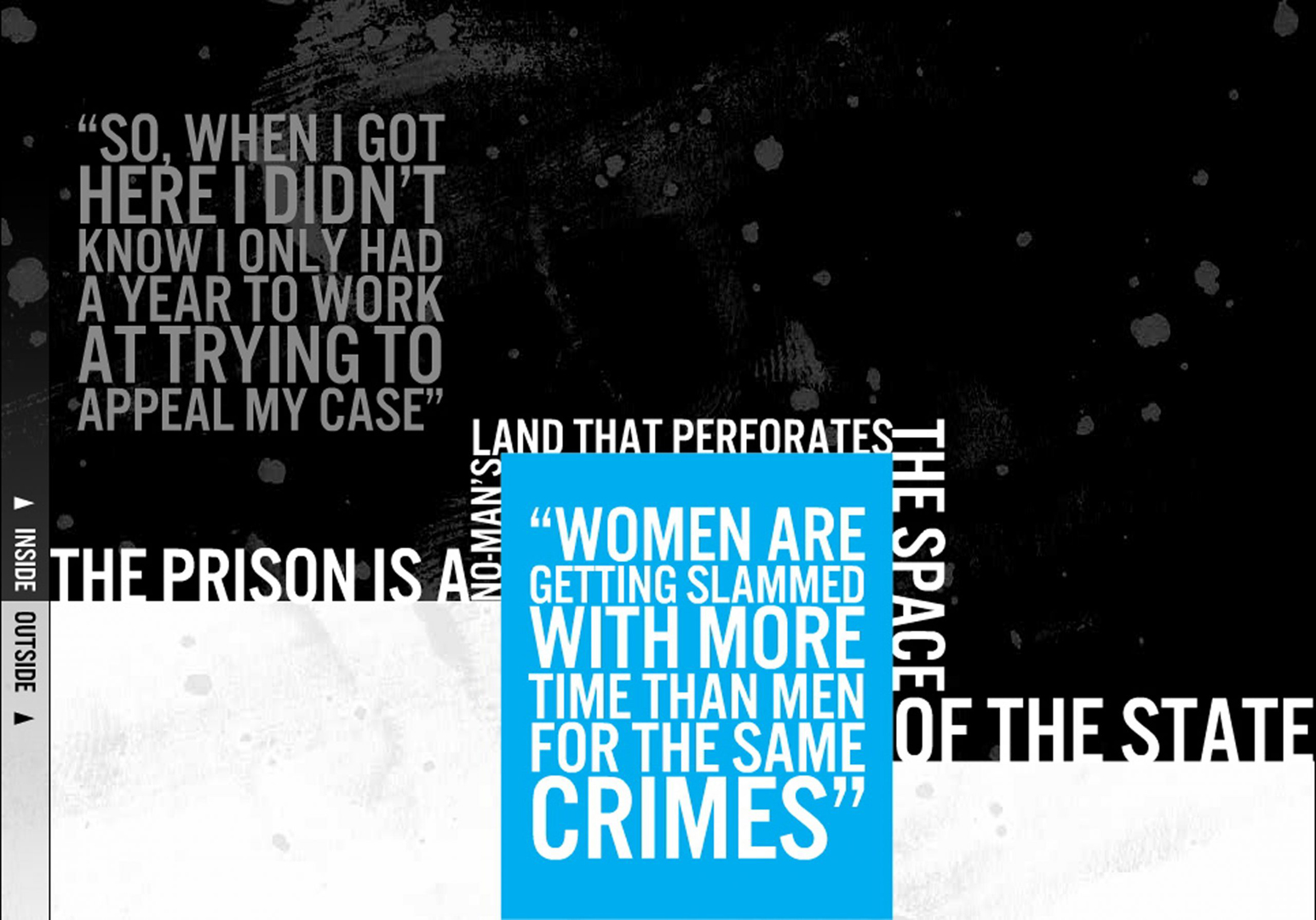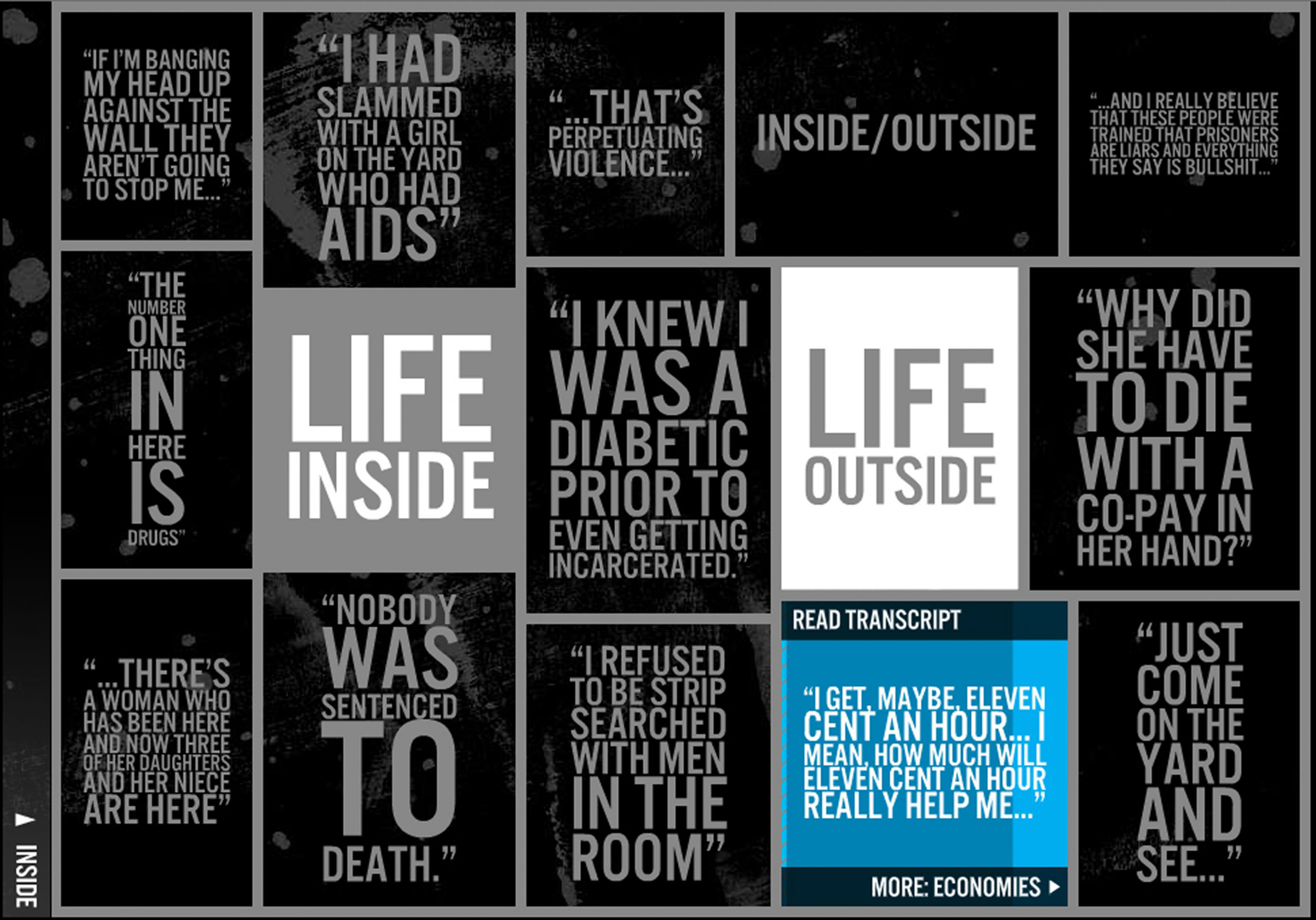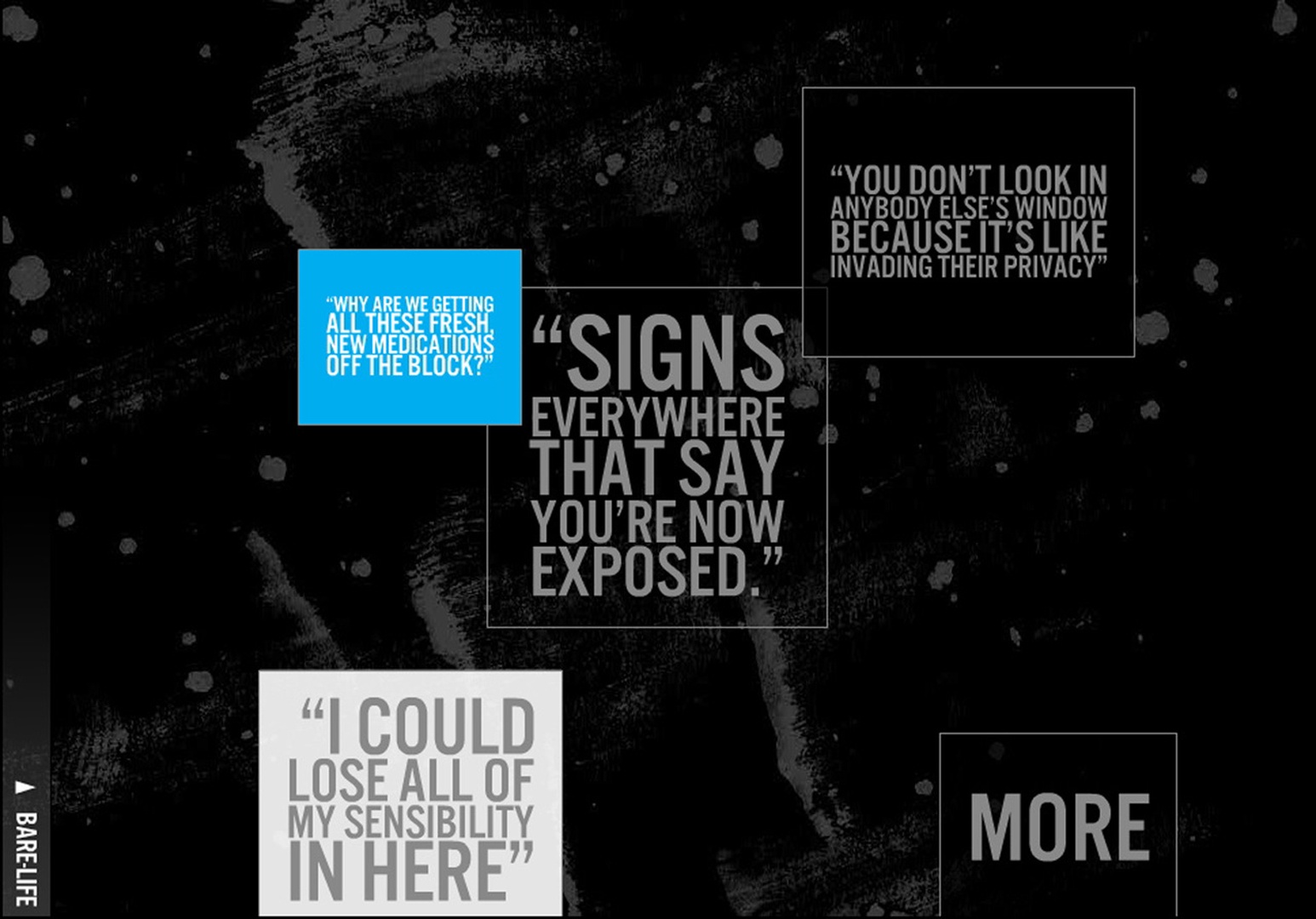Sharon Daniel: Public Secrets
Artist(s):
Title:
- Public Secrets
Exhibition:
Category:
Artist Statement:
The web-documentary Public Secrets (2007) provides an interactive interface to an audio archive of hundreds of statements made by incarcerated women, which unmask the secret injustices of the war on drugs, the criminal justice system and the prison industrial complex. Some secrets are kept from the public and then there are ‘public secrets’ – secrets that the public chooses to keep safe from itself. The injustices of the war on drugs, the criminal justice system, and the Prison Industrial Complex and their special impact on women are ’public secrets’. The trick to the public secret is in knowing what not to know. In 2001, I began working with the legal non-profit Justice Now. I walked through a metal detector and into the Central California Women’s Facility, the largest women’s in the United States. It changed my life. The stories I heard inside challenged my most basic perceptions – of justice, of freedom and responsibility. After meeting with me, the women I interviewed were subject to strip-search and visual body cavity searches. Most of the women I interviewed were, highly politicized, peer organizers who were seriously committed to speaking out against injustice. For these women, our conversations were acts of ethical and political testimony. It was my responsibility to create a context in which this testimony could be heard.
Public Secrets, like all my work in digital media and interactive documentary, is feminist and anti-racist. Public Secrets was co-authored with incarcerated women and focuses on the specific conditions of injustice perpetrated against women in the criminal punishment system. Since its launch in 2007 Public Secrets has been used as a tool for advocacy by Justice Now, as well as many other anti-prison activists, and used in countless university courses across disciplines from art to legal studies.
Video:
Sharon Daniel – Public Secrets from ACM SIGGRAPH on Vimeo.
Other Information:
Archive, Documentation, Narratives, and Violence








